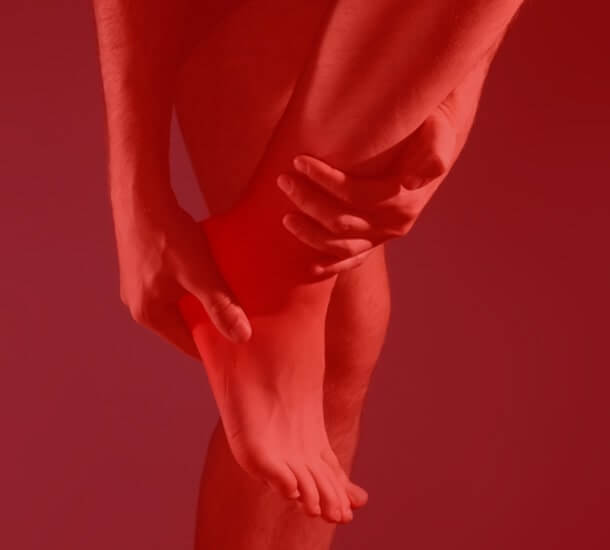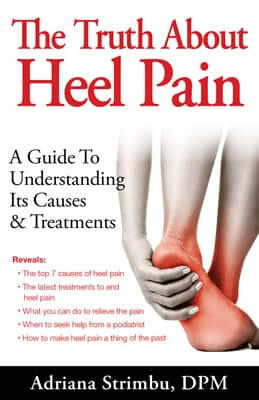Connect With Us
Blog
Items filtered by date: May 2025
Relieving Pain From an Ingrown Toenail
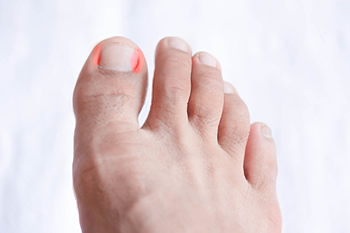
An ingrown toenail occurs when the edge of the nail grows into the surrounding skin, causing pain, redness, swelling, and sometimes infection. Soaking the foot in warm water with Epsom salts can help reduce inflammation and soften the nail. Keeping the foot clean and dry afterward is essential. Gently lifting the nail edge with a clean piece of cotton or dental floss may relieve pressure, but this should only be attempted in mild cases. Wearing tight shoes or socks can worsen the condition and should be avoided. Mild pain relievers may help with discomfort. If the area becomes increasingly red, warm, or begins to drain pus, these are signs of infection. Recurrent or severe ingrown toenails may require a minor in-office procedure to remove part of the nail or the nail root. If home care is not effective, it is suggested that you see a podiatrist for safe and lasting treatment.
Ingrown toenails can become painful if they are not treated properly. For more information about ingrown toenails, contact Adriana Strimbu, DPM of Complete Foot & Ankle Care. Our doctor can provide the care you need to keep you pain-free and on your feet.
Ingrown Toenails
Ingrown toenails occur when a toenail grows sideways into the bed of the nail, causing pain, swelling, and possibly infection.
Causes
- Bacterial infections
- Improper nail cutting such as cutting it too short or not straight across
- Trauma to the toe, such as stubbing, which causes the nail to grow back irregularly
- Ill-fitting shoes that bunch the toes too close together
- Genetic predisposition
Prevention
Because ingrown toenails are not something found outside of shoe-wearing cultures, going barefoot as often as possible will decrease the likeliness of developing ingrown toenails. Wearing proper fitting shoes and using proper cutting techniques will also help decrease your risk of developing ingrown toenails.
Treatment
Ingrown toenails are a very treatable foot condition. In minor cases, soaking the affected area in salt or antibacterial soaps will not only help with the ingrown nail itself, but also help prevent any infections from occurring. In more severe cases, surgery is an option. In either case, speaking to your podiatrist about this condition will help you get a better understanding of specific treatment options that are right for you.
If you have any questions, please feel free to contact our office located in Hallandale Beach, FL . We offer the newest diagnostic and treatment technologies for all your foot care needs.
Do You Suffer From Painful Feet?
Cracked Heels and Vitamin Deficiencies
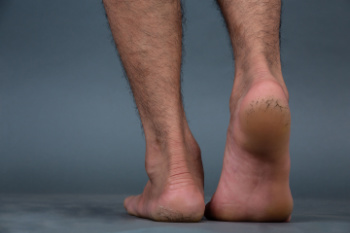
Cracked heels can be more than just a cosmetic concern. They may signal an underlying nutritional issue, particularly a vitamin deficiency. Vitamins play an essential role in maintaining skin health and elasticity. When the body lacks essential nutrients, such as vitamin E, vitamin C, and certain B vitamins, the skin may become dry, rough, and prone to cracking. These deficiencies affect the skin's ability to repair itself and retain moisture, which leads to fissures around the heels. People with poor diets or malabsorption issues are at greater risk. In addition to moisturizing and wearing supportive footwear, addressing any nutritional shortfalls through diet or supplements may help improve the condition of the heels. Cracked heels can be uncomfortable and unsightly. If you have developed this condition, it is suggested that you contact a podiatrist who can offer effective treatment solutions, which may include prescribed medication.
If the skin on your feet starts to crack, you may want to see a podiatrist to find treatment. If you have any concerns, contact Adriana Strimbu, DPM from Complete Foot & Ankle Care. Our doctor can provide the care you need to keep you pain-free and on your feet.
Cracked Heels
It is important to moisturize your cracked heels in order to prevent pain, bleeding, and infection. The reason cracked heels form is because the skin on the foot is too dry to support the immense pressure placed on them. When the foot expands, the dry skin on the foot begins to split.
Ways to Help Heal Them
- Invest in a good foot cream
- Try Using Petroleum Jelly
- Ease up on Soaps
- Drink Plenty of Water
Ways to Prevent Cracked Heels
- Moisturize After Showering
- Skip a Shower
- Keep Shower Water Lukewarm
- Don’t Scrub Your Feet
If you are unsure how to proceed in treating cracked heels, seek guidance from a podiatrist. Your doctor will help you with any questions or information you may need.
If you have any questions, please feel free to contact our office located in Hallandale Beach, FL . We offer the newest diagnostic and treatment technologies for all your foot care needs.
Sesamoiditis and Its Impact on Foot Health
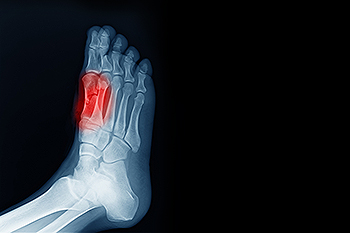
Sesamoiditis involves inflammation of the small sesamoid bones located beneath the big toe joint. These bones help with weight-bearing and movement during walking or running. The condition often develops from repeated injury or overuse, especially in activities that place pressure on the ball of the foot such as dancing, running, or wearing thin-soled shoes. Common symptoms include persistent pain beneath the big toe, swelling, and difficulty bending the toe. Pain may worsen with activity and ease with rest. Diagnosis typically involves a physical examination and imaging tests to rule out fractures or other conditions. If you have pain in this part of your foot, it is suggested that you consult a podiatrist who can accurately diagnose and treat sesamoiditis.
Sesamoiditis is an unpleasant foot condition characterized by pain in the balls of the feet. If you think you’re struggling with sesamoiditis, contact Adriana Strimbu, DPM of Complete Foot & Ankle Care. Our doctor will treat your condition thoroughly and effectively.
Sesamoiditis
Sesamoiditis is a condition of the foot that affects the ball of the foot. It is more common in younger people than it is in older people. It can also occur with people who have begun a new exercise program, since their bodies are adjusting to the new physical regimen. Pain may also be caused by the inflammation of tendons surrounding the bones. It is important to seek treatment in its early stages because if you ignore the pain, this condition can lead to more serious problems such as severe irritation and bone fractures.
Causes of Sesamoiditis
- Sudden increase in activity
- Increase in physically strenuous movement without a proper warm up or build up
- Foot structure: those who have smaller, bonier feet or those with a high arch may be more susceptible
Treatment for sesamoiditis is non-invasive and simple. Doctors may recommend a strict rest period where the patient forgoes most physical activity. This will help give the patient time to heal their feet through limited activity. For serious cases, it is best to speak with your doctor to determine a treatment option that will help your specific needs.
If you have any questions, please feel free to contact our office located in Hallandale Beach, FL . We offer the newest diagnostic and treatment technologies for all your foot care needs.
Fractures on the Inner Bump of the Ankle

Fractures on the inner side of the ankle, called medial malleolus fractures, affect the lower end of the tibia. These ankle fractures often result from the foot forcefully rolling inward or outward. The injury may involve a small bone fragment, a clean break, or multiple fracture lines. Symptoms include sharp pain along the inner ankle, swelling, bruising, and difficulty putting weight on the foot. Medial malleolus fractures can occur from direct trauma or repetitive stress, especially in athletes or people with low bone density. Treatment depends on the position and stability of the fractured bone. If the joint remains aligned, immobilization with a boot or cast may be sufficient. However, if the fracture causes joint instability or misalignment, surgery may be needed to reposition and secure the bone using screws, plates, or other methods. A podiatrist can also assess the surrounding cartilage for damage during surgery. If you have pain in the inner side of the ankle, it is suggested that you schedule an appointment with a podiatrist for an exam and appropriate treatment.
Broken ankles need immediate treatment. If you are seeking treatment, contact Adriana Strimbu, DPM from Complete Foot & Ankle Care. Our doctor can provide the care you need to keep you pain-free and on your feet.
Broken Ankles
A broken ankle is experienced when a person fractures their tibia or fibula in the lower leg and ankle area. Both of these bones are attached at the bottom of the leg and combine to form what we know to be our ankle.
When a physician is referring to a break of the ankle, he or she is usually referring to a break in the area where the tibia and fibula are joined to create our ankle joint. Ankles are more prone to fractures because the ankle is an area that suffers a lot of pressure and stress. There are some obvious signs when a person experiences a fractured ankle, and the following symptoms may be present.
Symptoms of a Fractured Ankle
- Excessive pain when the area is touched or when any pressure is placed on the ankle
- Swelling around the area
- Bruising of the area
- Area appears to be deformed
If you suspect an ankle fracture, it is recommended to seek treatment as soon as possible. The sooner you have your podiatrist diagnose the fracture, the quicker you’ll be on the way towards recovery.
If you have any questions, please feel free to contact our office located in Hallandale Beach, FL . We offer the newest diagnostic and treatment technologies for all your foot care needs.

